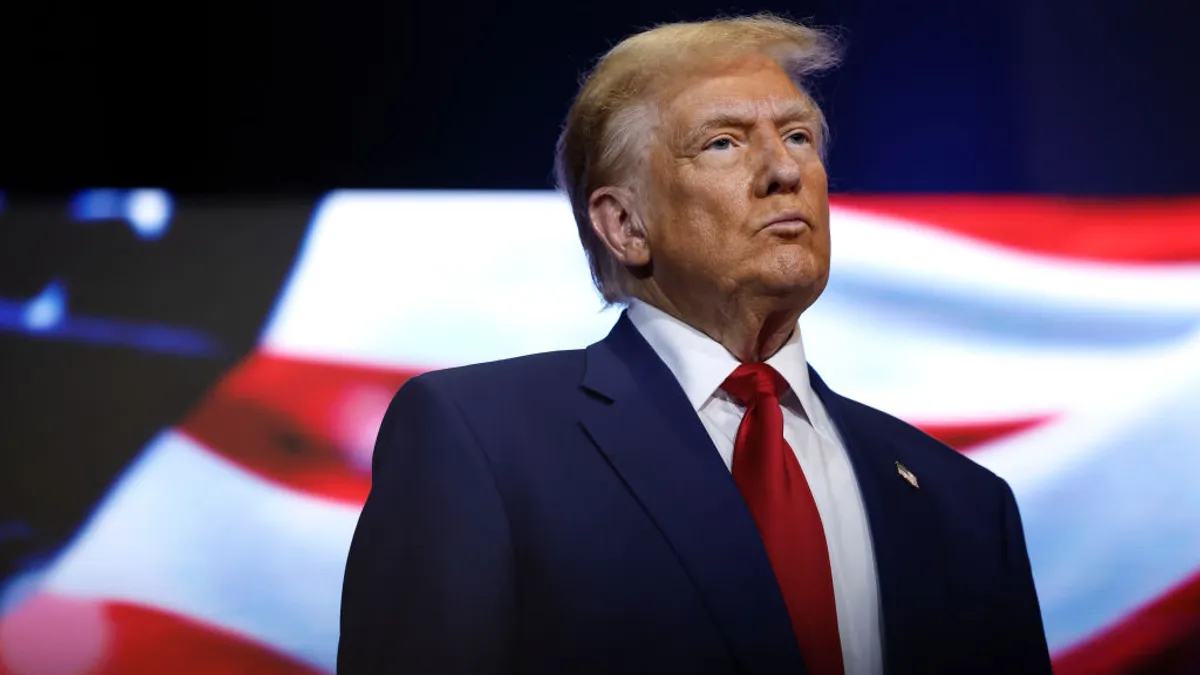Donald Trump defeated Vice President Kamala Harris Wednesday, sending the former president back to the White House for a second term after a heated campaign.
Though the Trump-Vance platform was light on details regarding technology oversight, the ticket promised to roll back President Joe Biden's executive order on AI. President Trump also criticized critical funding for semiconductor manufacturing in the U.S..
Analysts expect the incoming Trump administration to take a less restrictive stance on business regulation overall, including the technology sector. CIOs and other executives are tracking the former president’s stance on key policy areas, and how the shifts may impact their strategies.
Here are four tech issues to watch in the forthcoming Trump administration:
1. Cloud market oversight
The Federal Trade Commission — led by Biden-nominated Chair Lina Khan — opened an inquiry last year into the cloud provider market, looking to probe the sector for anticompetitive practices and security gaps.
The inquiry, launched in March 2023, remains open. A Trump presidency is widely expected to replace senior officials across government agencies like the FTC, leaving the future of the inquiry uncertain. Tesla CEO Elon Musk, a vocal supporter and major donor of Trump's campaign efforts, said last week Khan would be "fired soon." Trump has said he would give Musk an official role in his administration.
2. AI oversight
In October 2023, Biden issued an executive order on AI and its development, setting clear guardrails for companies working on the technology.
The order tasked government agencies with creating model development guidelines and called for a clear framework for government adoption of AI. One of the specific details in Trump's agenda on technology oversight was to repeal the order.
"We will repeal Joe Biden’s dangerous executive order that hinders AI Innovation, and imposes radical leftwing ideas on the development of this technology," the document laid out. "In its place, Republicans support AI development rooted in free speech and human flourishing."
3. Cybersecurity policy
Executives looking for signs of Trump's priorities around cybersecurity can look to his previous term in office.
In 2017, Trump enacted an executive order calling for broad modernization across government IT, flagging ongoing cybersecurity concerns. The following year, the Trump administration unveiled the country's first national cybersecurity strategy in 15 years, leading to more aggressive responses to malicious activity.
In its policy outline, the incoming administration promised to use all tools to shield critical infrastructure and the industrial base against malicious cyber actors.
"This will be a national priority, and we will both raise the security standards for our critical systems and networks and defend them against bad actors," according to the document.
4. CHIPS and Science Act
The Biden administration's CHIPS and Science Act, signed into law in August 2022, has poured more than $33 billion into semiconductor manufacturing in the U.S.
In public statements ahead of Election Day, Trump criticized the initiative, suggesting instead his administration would rely on tariffs against foreign companies to spur domestic manufacturing.
His agenda document highlights U.S. manufacturing jobs as an economic priority but does not explicitly call for a repeal of semiconductor funding allocated through the legislation. Changes to the Biden-era strategy could impact the supply of semiconductors and, ultimately, the cost of critical IT components like servers and laptops.













